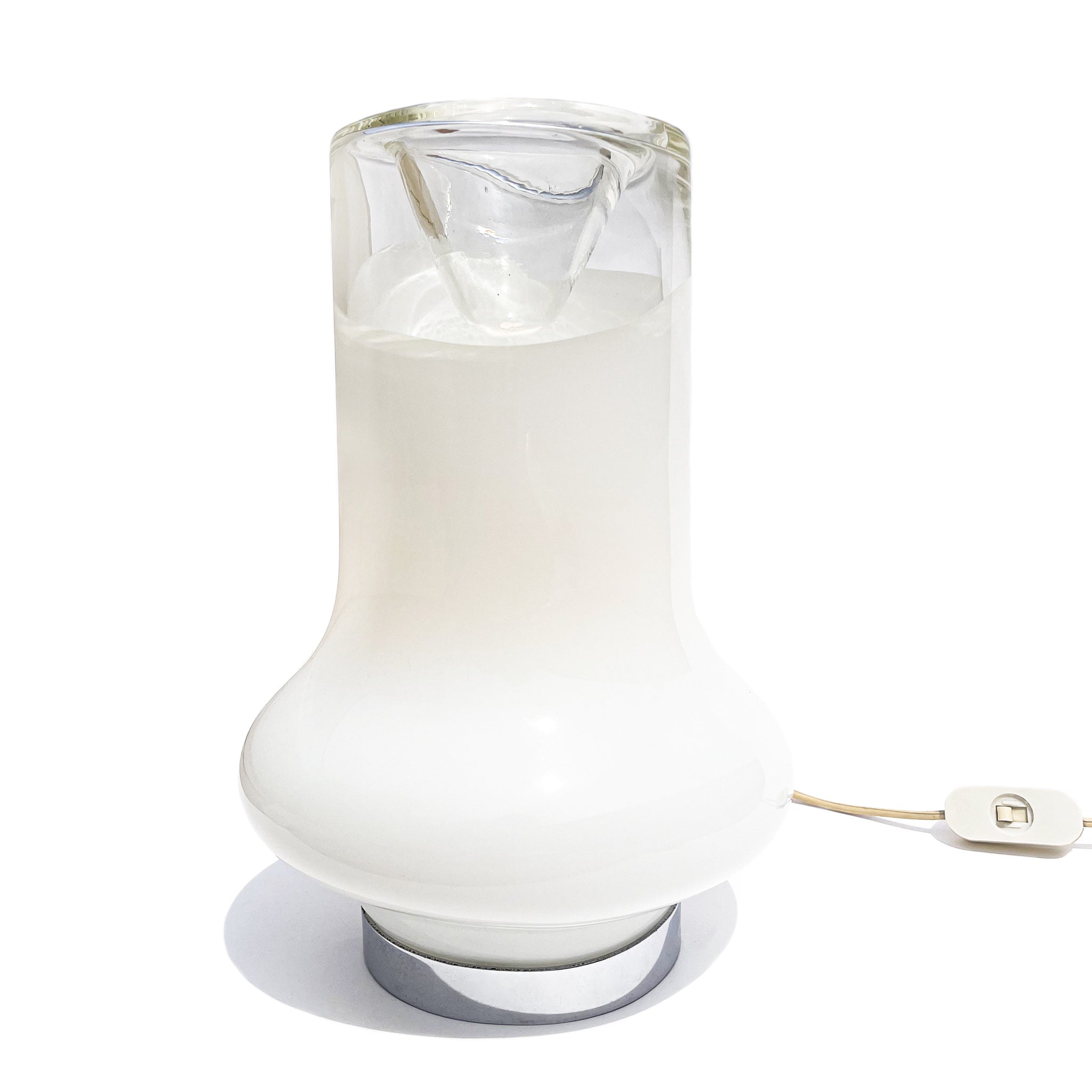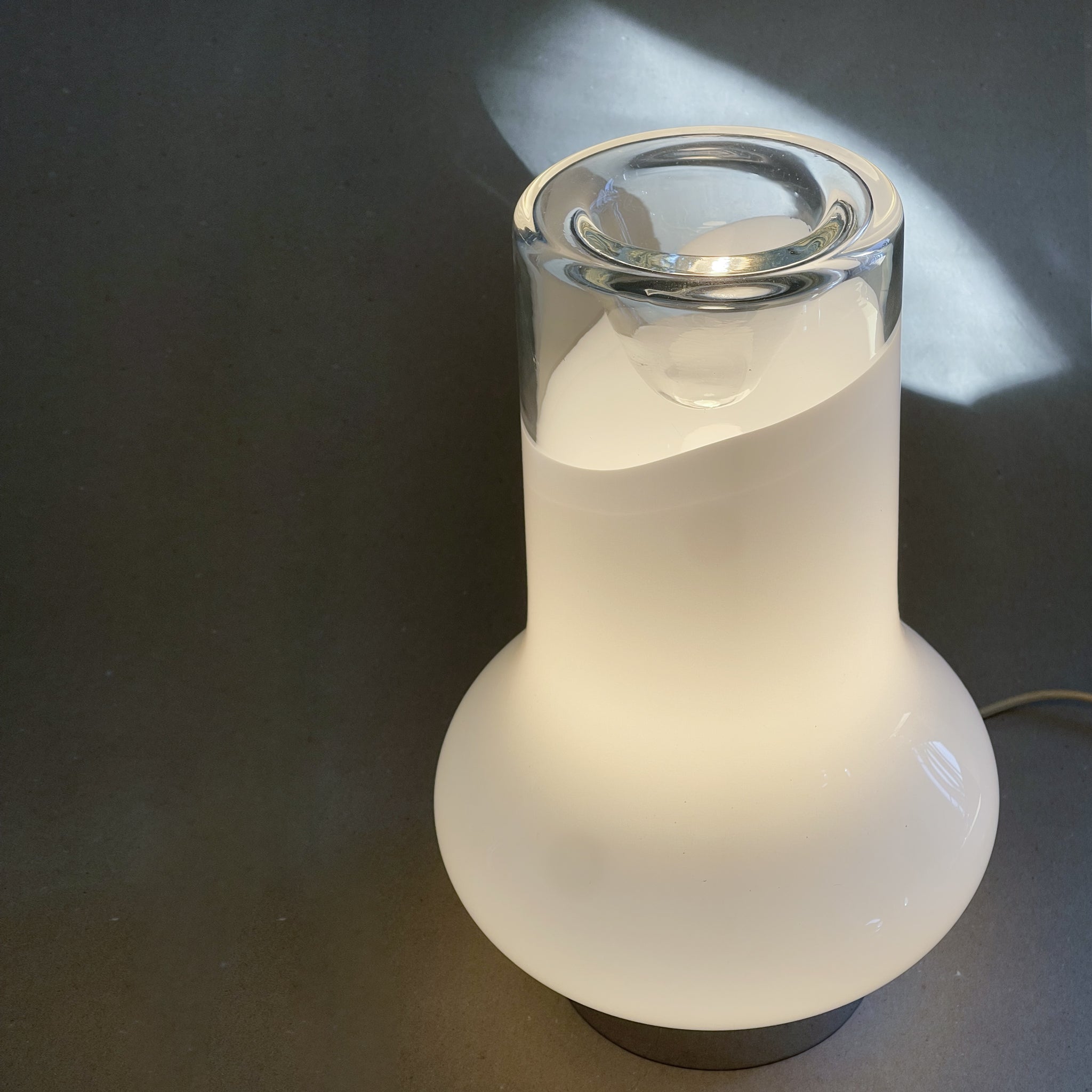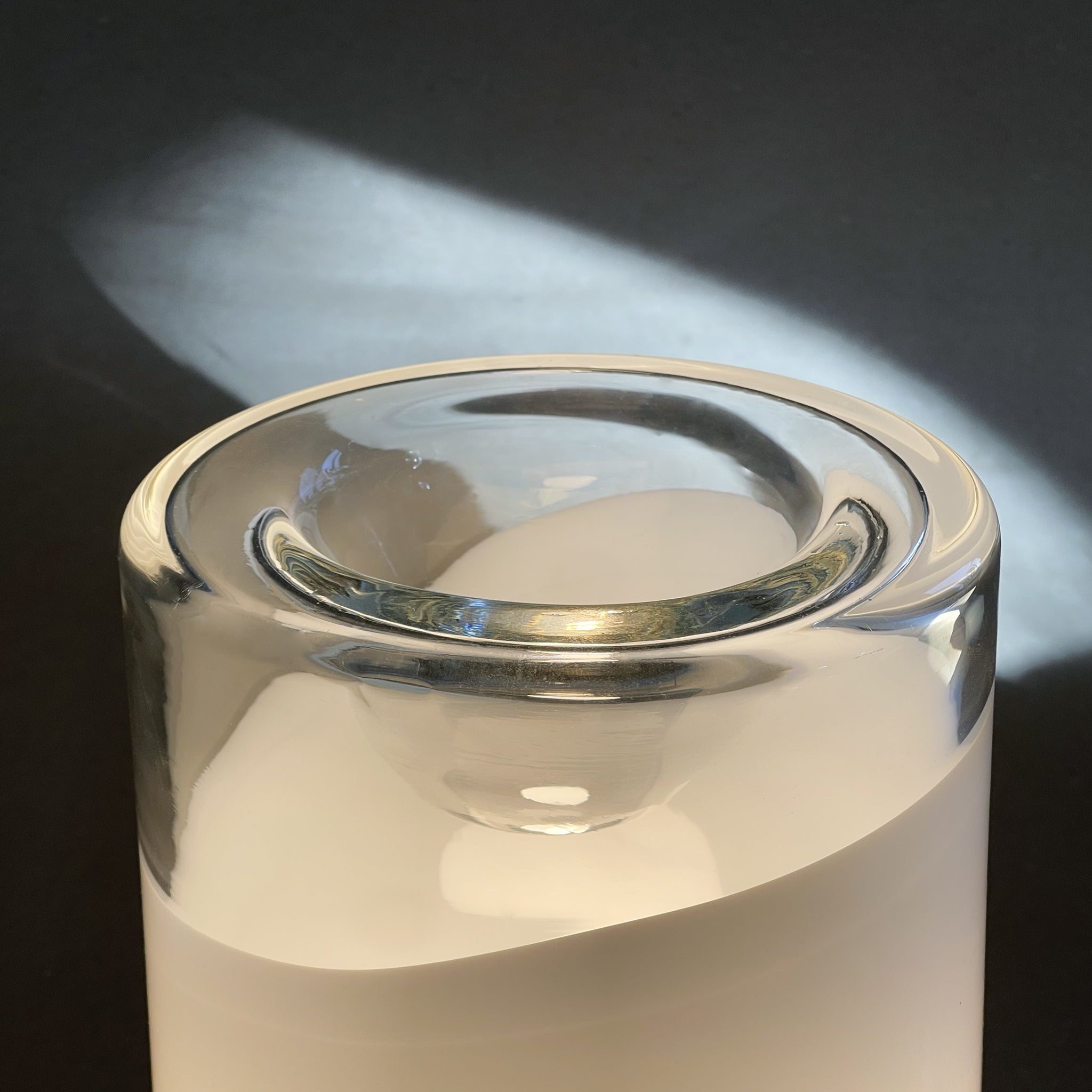Space Age lamp by Roberto Pamio for Leucos, Italy, 1970s — Sculptural theory of the universe.
A lamp as a gravity well and a small theory of relativity — light drawn inward, bent, and then released. Designed by Roberto Pamio for Leucos, its conical glass body recalls the diagrams of curved space-time, where form and physics converge.
White Murano glass, mouth-blown in a swirling translucency, becomes both atmosphere and orbit — a Space Age object that feels at once cosmic and domestic, sculptural and intimate.
A table lamp as a small theory of the universe.
OBJECT SPECIFICATIONS
PRODUCT: Murano glass table lamp
DESIGNER: Roberto Pamio
MANUFACTURER: Leucos
ORIGIN: Murano, Italy
PERIOD: 1960s–1970s
STYLE: Mid-Century Modern / Space Age
MATERIAL & TECHNIQUE: Mouth-blown glass (opaline white and clear glass with spiral pattern)
COLOR: Opaline white, clear; chrome metal base
TEXTURE: Smooth glass
DIMENSIONS: (+-) Height: 33 cm; Diameter: 21 cm
ELECTRICAL CONNECTION: original | verified | bulb E27, not included
CONDITION: Excellent condition
Space Age — homes like laboratories of tomorrow
More than a style, Space Age was a sensibility — an era when design stretched toward the cosmos, translating the promises of science and technology into domestic forms. Between the late 1950s and 1970s, objects acquired aerodynamic curves, glossy, smooth surfaces, echoing satellites and rockets. It was a language of optimism and speculation, where furniture, lighting, and everyday items became prototypes of imagined futures. Today, Space Age design resonates as both a memory of utopian exploration and a material archive of humanity’s longing to inhabit other worlds.


